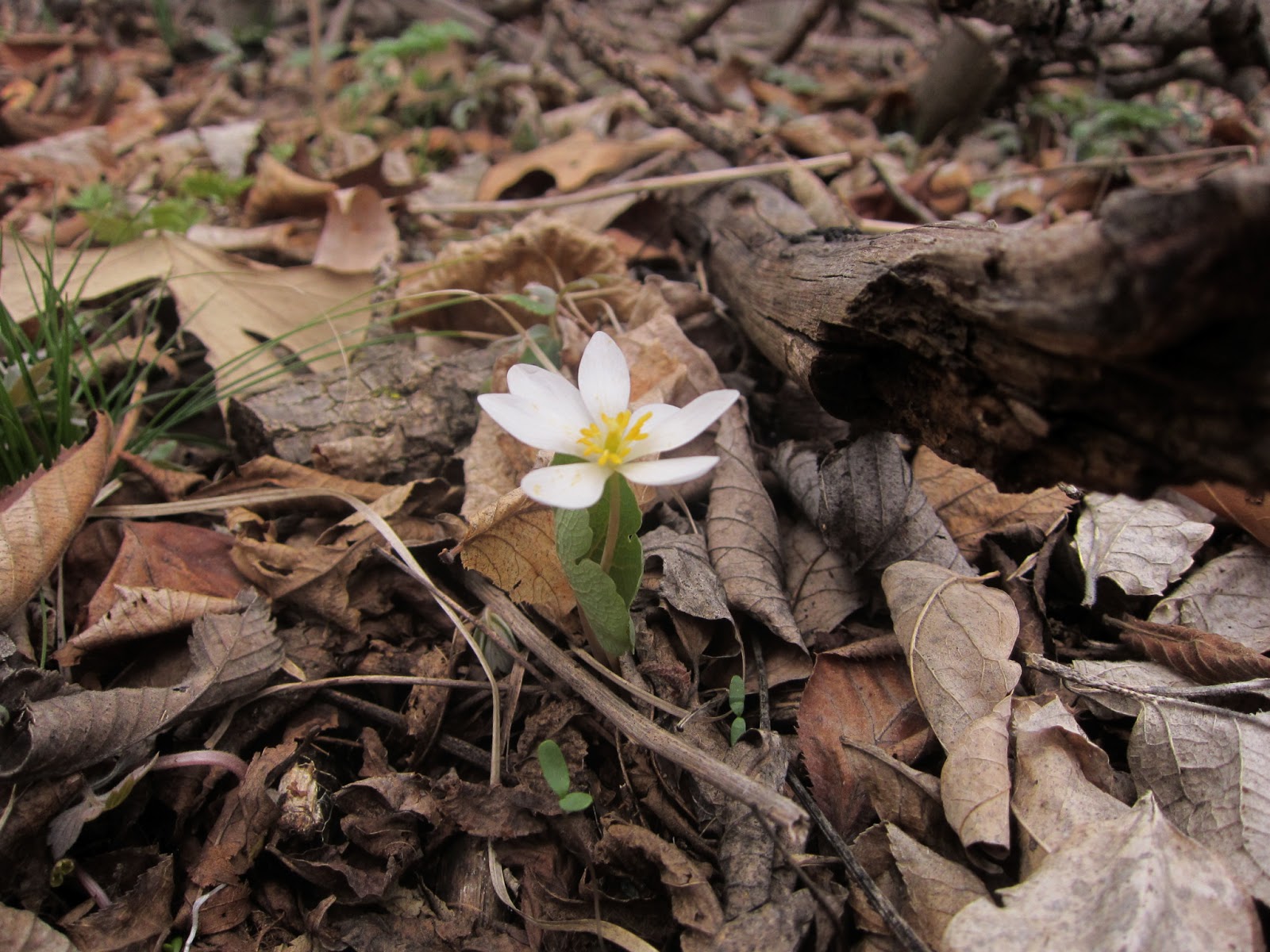The red-juiced herb cloaked in leaf as its tiny white blossom emerges - ever so cautiously unfolding to merge its yellow tuft with the woodland sunlight. It is one of the earliest spring bloomers and is oft familiar with a spring snow.
The flowers typically have 8 petals - alternating narrow and wide - exhibiting a square shaped visual.
 | |
| bloodroot with waterleaf |
Melvin Gilmore interestingly noted its use as a love charm,
"For a love charm a bachelor of the Ponca, after rubbing some of the root on his palm, would contrive to shake hands with a girl he desired; if successful in this, after five or six days, she would be found willing to marry him. From this use comes the Omaha-Ponca name of the plant - Minigathe maka wau, 'woman-seeking medicine.' It was said to be used sometimes also as a decorative skin stain." Gilmore, Melvin R., "Uses of Plants by the Indians of the Missouri River Region," University of Nebraska Press, 1977.
I personally think the most successful - and possibly safest - use would be as a dye for cloth materials.
Also encountered a colony of Erythronium - fawn lilies - carpeting the woodland floor - camouflaged by their brown mottling of the leaves. These small bulbs are a favourite of small mammals - and of the human liking also. Gilmore said he was informed "by Winnebago that children ate them raw with avidity when freshly dug in springtime."
Other ephemeral encounters of the early spring hike include the miniature spring beauty, Claytonia virginica, and the distinctive baggy pants of the Dutchman's breeches, Dicentra cucullaria.
The Beauties were found in abundant patches across the steep hill slopes - unfortunately along with an abundance of garlic mustard as seen in the photo.
The spud-like flavour of the Spring beauties are a particular delicacy among the woodland Fairies, the best to harvest in the latest of March thru the earliest of June. Often the massive disappearance of the beauty spuds is attributed to deer preferences...hah!
On Dutchman's, it is the crouch of the breeches that attaches to the flower stalk - and the legs are filled with the luscious nectar. Noted by Ratzlaff and Barth in Field Guide to Wildflowers (FFNC and NWNC),
"The 'waist' is opened by early bumblebees. Their proboscises are long enough to reach the nectar in the spurs (legs), and to pollinate the flowers. Some bees, whose proboscises are too short, have learned to cut holes through the spurs to get to the nectar, then denying pollination of those plants." I guess they need to more vigilant about who gets in their pants!!!
Others along the trail on a brisk Sunday...
The Trail less taken...
GNOMES RULES or The Rules of Gnomes
Rule 1 - Gnomes Rule
Rule 2 - Always follow Rule #1















Ha, I was hiking WITH you and still continue to learn after the fact! That was a fun day. Wonderful photography. . . as always :)
ReplyDelete